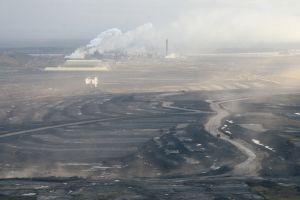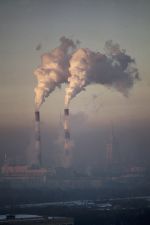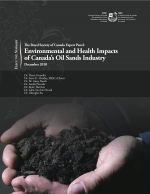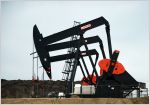Canada isn't the quiet and unassuming upstairs neighbour it used to be.
This will soon become apparent to the 96 new members in the United States 112th Congress, sworn in this week.
Most are Republicans, who rode the Tea Party wave into office. How they react to energy and climate issues will be worth watching.
Part of their steep learning curve will be Canada's oilsands and climate policy. Canada is already America's primary source of foreign oil supplying 19 per cent of the country's total crude imports in 2008 and certain to increase the flow in future years.
But at the same time, Canadian oil has become controversial. In recent weeks, environmental groups in the U.S. launched radio, television and print ads calling on President Obama to reject approval of the Keystone XL project, a 2,739 kilometre pipeline from the oilsands to refineries on the U.S. Gulf Coast.
 On the day before Congress was sworn in, the American Petroleum Institute launched an advertising campaign promoting swift approval of the pipeline.
On the day before Congress was sworn in, the American Petroleum Institute launched an advertising campaign promoting swift approval of the pipeline.
Meanwhile, the oilsands itself has sparked letters from both Republican and Democratic lawmakers as well as thousands of concerned citizens over whether the United States should increase its reliance on this greenhouse gas intensive fuel.
The issue will be hard to ignore. So, as these new U.S. lawmakers settle in, perhaps it's time for some free advice on Canadian energy issues:
Get up to speed on oilsands issues.
The oilsands underlie an area 56,000 square miles of land, or roughly the size of Florida. In 2010, the oilsands produced 1.5 million barrels of bitumen per day, most of it shipped to the United States. Those levels could reach three million barrels a day by 2020.
With the U.S. as the primary consumer of this resource it has a responsibility to consider the environmental impacts on air, land, and water.
 There are two types of oilsands extraction: mining and drilling (also called "in situ"). The media focuses on mining, but as we have discussed in the past, each has its environmental consequences.
There are two types of oilsands extraction: mining and drilling (also called "in situ"). The media focuses on mining, but as we have discussed in the past, each has its environmental consequences.
But while mines are still expanding, in the long term the majority of development will involve drilling. The method uses less water and doesn't create huge open-pit mines. But it's a stretch to call drilling benign, given the substantial fragmentation it creates to forests, and given that greenhouse gas emissions are 2.5 times more intensive than mining.
Acquaint yourself with the regulatory environment under which oilsands development is managed and monitored.
In Canada, jurisdiction over energy and climate issues are split between the federal and provincial governments. Provinces like Alberta play a significant role managing natural resources, like the oilsands. Yet the federal government jurisdiction includes First Nations (Canada's term for Native Canadians), fisheries and at-risk species - all of them impacted by energy extraction.
 Oilsands monitoring programs — largely overseen by the province of Alberta — were recently criticized by the Royal Society of Canada, an independent review panel, and Canada's Office of the Auditor General, a federal government oversight agency. Despite the criticism, that regulators lack understanding of the environmental impacts, Canada is looking at significant expansion of the oilsands.
Oilsands monitoring programs — largely overseen by the province of Alberta — were recently criticized by the Royal Society of Canada, an independent review panel, and Canada's Office of the Auditor General, a federal government oversight agency. Despite the criticism, that regulators lack understanding of the environmental impacts, Canada is looking at significant expansion of the oilsands.
Understand the implications for greenhouse gas emissions with increased U.S. reliance on the oilsands.
Lawmakers should be wary of claims about the relatively low environmental impacts of oilsands production. According to independent, peer-reviewed studies, production of synthetic crude oil from oilsands is much more greenhouse gas intensive than conventional processes - anywhere from 6-37 per cent. Excluding transportation, oilsands emits 3.2 to 4.5 times more greenhouse gas than production of conventional oil produced in the U.S. or Canada.
Pay attention to climate policy in both countries.
Canada's current government, under the leadership of Conservative Prime Minister Stephen Harper, has stated it wants to "harmonize" its climate policy with the United States. However, Canada has not matched the U.S. EPA's new greenhouse gas regulations, which cover new facilities and major expansions.
Nor has it announced plans to align with the power plant and refinery regulations that the EPA plans to finalize before the end of 2012.
At this point, the Canadian federal government places no limitation on greenhouse gas emissions from new or existing oilsands facilities.
If U.S. lawmakers are concerned about oilsands emissions, they will need to become familiar with both federal and provincial climate policy. In Alberta, the province where oilsands operations are located, the government's industrial greenhouse gas policy focuses on reducing the emissions intensity of production, not on making absolute reductions in the near term.
Unfortunately, Canada's national greenhouse gas emissions are projected to keep growing under 'business as usual', with a significant increase in oilsands emissions.
Danielle Droitsch was the director of U.S. Policy at the Pembina Institute until 2011.



